Landings often require large amounts of earthworks. Poor construction can cause significant environmental impacts if something goes wrong.
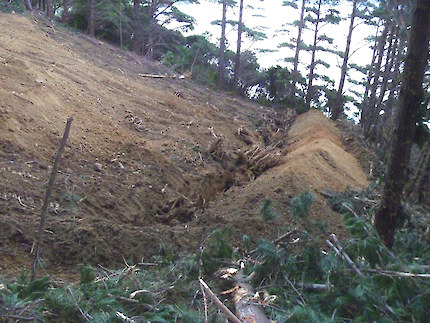
- Stumps have been moved to a safe location and put in a trench at what will be the toe of the benched fill
- Rotting stumps and roots will not cause fill problems in the future
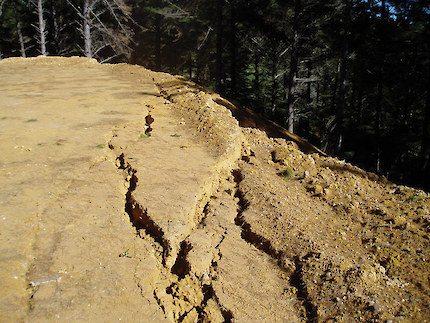
- Serious tension cracks – the result of poor benching and compaction
- Water going into the tension cracks will make the fill heavier and more likely to collapse and erode

- The landing formation was benched
- Benches are visible. They have not been covered over with fill
- Substandard material and vegetation were removed
- Fill has been compacted in layers

- Major landing failure caused by poor water control and lack of compaction
- Slash on the fill made the problem worse
- Material triggered a debris flow which went onto the neighbour’s land
- This is a serious environmental incident

- Landing design was worked into the ‘lie of the land’, while meeting operational requirements
- Stumps and debris were put in a safe location that will not affect harvesting operations
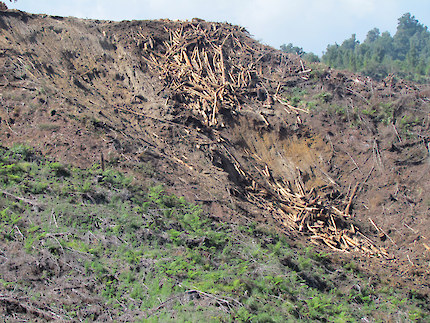
- Bird’s nest has failed. There was no accessible and stable area for loggers to put the slash
- No pocket (slash) bench was constructed to put slash onto
- Expensive rehabilitation can only partly solve the problem, because not all material can be reached by the excavator. The remaining option is to burn the bird’s nest
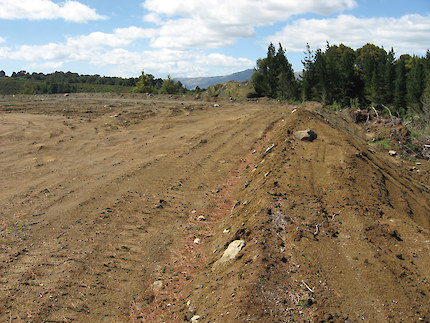
- Drainage is directed away from the fill slopes
- The landing has fall to control water and reduce ponding
- The landing surface was track rolled to help shed water. Roller compaction would have a better result
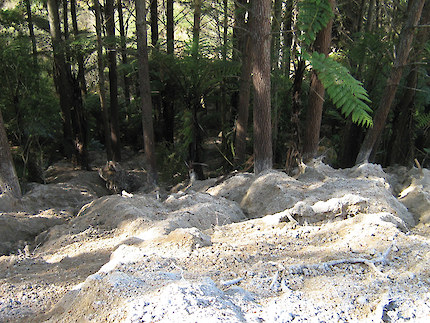
- Water was not directed away from the fill
- Water has severely scoured the landing edge
- Sediment has gone into the river
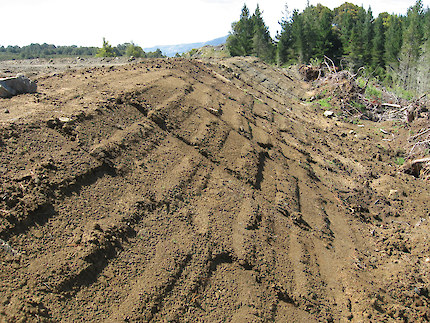
- The fill is compacted. The horizontal ridges will help reduce erosion
- The fill is over-sown

- Water is draining through the middle of the skid
- This will cause operational problems during logging
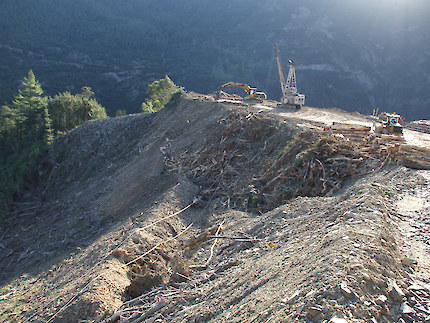
- The slash bench was built as part of the planned construction
- It is in a good, safe location
- Stumps and slash are located on the bench
- Water from the road should not have been directed onto the bench
- The bench does not have drainage to stop ponding and saturating the fill
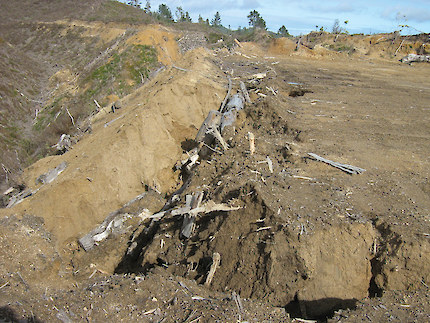
- Poor water control has caused heavy scouring at the front of the skid
- Water should be directed away from large fills
- Water volume and speed will erode earthworks
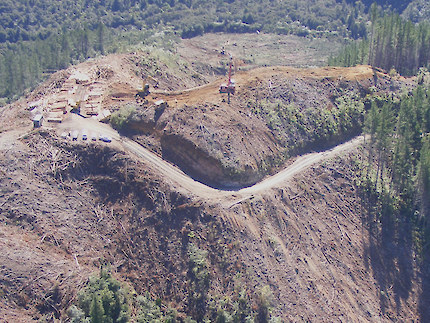
- Construction includes space for truck turning and vehicle parking
- A two-stage pad was built to improve logging and to create extra space to process the logs

- Poor construction and ongoing maintenance of water control contributed to this failure many years after construction
- The visual impact will last for years
- Slip sites grow poor trees

- The landing was built with good access for ground-based harvesting

- A failed landing subgrade caused by a too shallow and narrow ditch at the back of the landing, plus poor contractor maintenance
- Log corduroy was needed to make the landing accessible to trucks